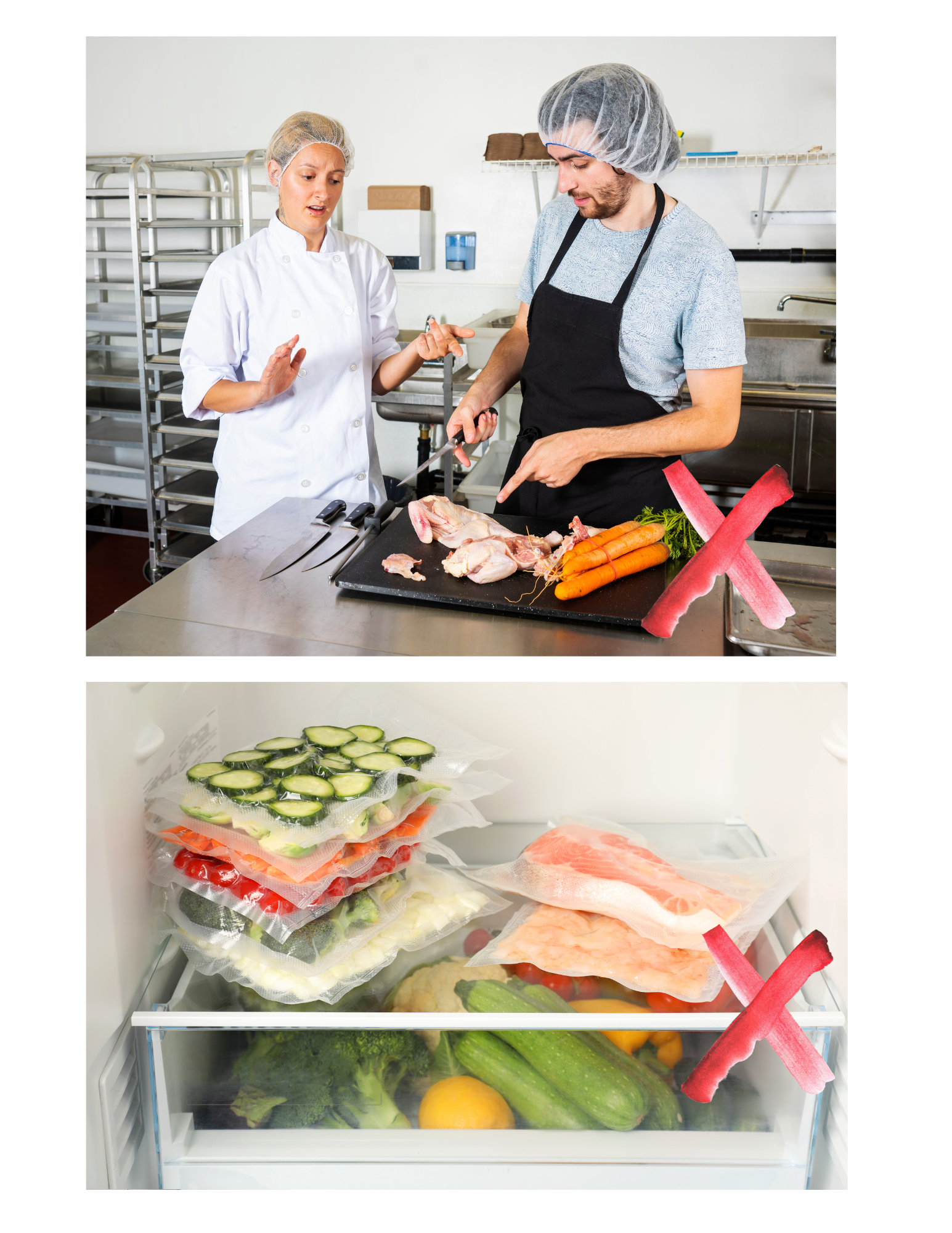45 8.2: Avoiding Cross-Contamination
8.2 Avoiding Cross-Contamination
Cross contamination occurs when pathogens are inadvertently transferred from one food or food contact surface to another food or food contact surface. This happens as a result of improper handling by the food employee. To avoid cross contamination, food employees should be careful to properly store food making sure fluids do not drip on RTE food or food that will not be cooked further. Contaminated ingredients can also be placed into dishes that receive no further cooking. An example of this would be green onion garnish that was cut with a contaminated knife being placed on a bowl of soup for service. Since the soup is being served with no additional cooking, the contaminated green onion makes the dish unsafe to eat and exposes the diner to food borne illness. Food contact surfaces like cutting boards,knives, and slicers are also breeding grounds for pathogens.When they are not properly cleaned and sanitized these items make it easy for pathogens to spread to food. Contaminated linen exposes food contact surfaces to cross contamination. Food employees must keep towels in solution buckets when not in use and ensure they are used properly when cleaning food contact surfaces.
In the figure below, carrots share the same cutting board as raw chicken. The carrots should be stored separately from the chicken because fluids from the chicken can contaminate the carrots making them unsafe to eat if they are not cooked to reduce pathogens to a safe level. In the second image, raw fish is being stored above produce in a refrigerator. Liquid from the fish can contaminate items below it making those items unsafe without cooking.

